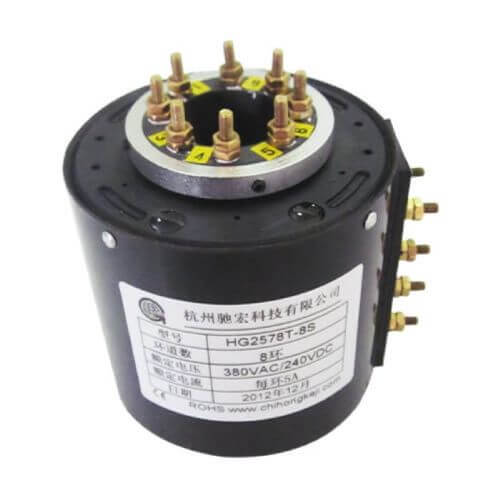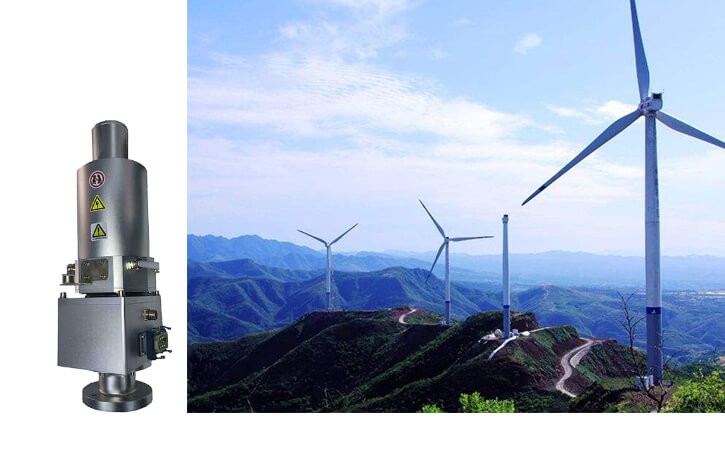An electrical slip ring is an electrical device used to transfer power or signals from a stationary to a rotating structure. It is also known as a rotary electrical interface, collector, or swivel. Slip rings are often used in applications such as wind turbines, cranes, and robotics.
What is the HS Code for Electrical Slip Ring?
The Harmonized System (HS) code is an international standard for classifying goods, and it is used by customs authorities around the world to determine tariffs and duties. The HS code for electrical slip rings is 8544.70.90.00.
Definition of HS Code
The Harmonized System (HS) Code is an internationally standardized system of names and numbers for classifying traded products. Developed by the World Customs Organization (WCO), the HS Code system is used by over 200 countries and economies as a basis for their customs tariffs and for the collection of international trade statistics. Each HS Code consists of six digits that can be further subdivided by individual countries to accommodate their own specific needs.
The first two digits of the HS Code represent the chapter, the next two digits indicate the heading within that chapter, and the last two digits represent the subheading. This hierarchical structure allows for detailed and uniform classification of goods, facilitating smoother international trade.
Role of HS Code in International Trade
HS Codes play a crucial role in international trade for several reasons:
- Standardization: By providing a uniform classification system, HS Codes help to ensure that all parties involved in international trade – exporters, importers, customs officials, and statistical agencies – understand the type of goods being traded. This reduces misunderstandings and disputes.
- Tariff Determination: Customs authorities use HS Codes to determine the applicable duties and taxes on imported goods. Accurate classification is essential to ensure that the correct tariff is applied, avoiding overpayment or underpayment of duties.
- Trade Policy and Regulation: Governments use HS Codes to monitor and control the import and export of goods. This includes enforcing trade embargoes, quotas, and trade agreements. Accurate classification helps in implementing these policies effectively.
- Statistical Data Collection: HS Codes are used to compile international trade statistics. This data is crucial for economic analysis and policy-making, helping governments and organizations to understand trade patterns, balance of payments, and economic trends.
- Logistics and Supply Chain Management: Companies use HS Codes for logistical purposes, such as determining the correct documentation needed for shipping and customs clearance. This helps to streamline the supply chain and reduce delays.
How to Look Up HS Codes
Finding the correct HS Code for a product can be done through various resources and methods:
- Online Databases: Several online databases provide searchable HS Code directories. Websites like the WCO’s Harmonized System Database, the United Nations International Trade Statistics Database (UN Comtrade), and the International Trade Centre (ITC) offer extensive resources for finding HS Codes.
- National Customs Websites: Many countries have their own customs websites with HS Code lookup tools. These resources are tailored to national requirements and can provide additional information specific to a country’s regulations.
- Customs Brokers and Trade Consultants: These professionals specialize in international trade and can provide expert advice on HS Code classification. They are particularly useful for complex products or when entering new markets with different regulatory requirements.
- Product Descriptions and Tariff Books: Detailed product descriptions and tariff books, often available from national customs authorities, can be used to manually look up HS Codes. These resources provide detailed classification guidelines.
- Industry Associations and Chambers of Commerce: These organizations often provide resources and assistance for HS Code classification. They may offer training sessions, guides, and personalized support for businesses.
- Software Solutions: Various software tools and applications are available that can assist in determining the correct HS Code based on product descriptions and characteristics. These tools often integrate with other trade management systems to streamline the classification process.
By understanding and utilizing HS Codes effectively, businesses can ensure compliance with international trade regulations, optimize their tariff payments, and enhance their overall efficiency in global trade operations.

HS Code Classification for Electrical Slip Rings
Specific HS Code for Electrical Slip Rings
The HS Code for electrical slip rings is typically classified under 8536.90.10.90. This specific code falls within the broader category of electrical apparatus for switching or protecting electrical circuits, or for making connections to or in electrical circuits. The detailed breakdown of this HS Code is as follows:
- 85: Chapter 85 – Electrical machinery and equipment and parts thereof; sound recorders and reproducers, television image and sound recorders and reproducers, and parts and accessories of such articles.
- 36: Heading 8536 – Electrical apparatus for switching or protecting electrical circuits, or for making connections to or in electrical circuits (for example, switches, relays, fuses, surge suppressors, plugs, sockets, lamp-holders, and other connectors).
- 90: Subheading 8536.90 – Other apparatus.
- 10.90: Further specific classification within the category, often indicating specific types of devices or their configurations.
Types of Products Included in This HS Code
The HS Code 8536.90.10.90 encompasses a variety of electrical slip rings and similar devices that are used for making electrical connections in rotating assemblies. The types of products included in this HS Code can vary but generally include:
- Standard Electrical Slip Rings: Devices that allow the transmission of electrical signals and power from stationary to rotating parts of a machine.
- High-Current Slip Rings: Specialized slip rings designed to handle higher electrical currents for applications requiring significant power transfer.
- Miniature Slip Rings: Compact slip rings used in smaller devices where space is a constraint.
- Fiber Optic Rotary Joints: Slip rings that include fiber optic connections to transmit data at high speeds with minimal signal loss.
- Capsule Slip Rings: Enclosed slip rings designed for applications needing a more compact and integrated solution.
- High-Temperature Slip Rings: Slip rings capable of operating in high-temperature environments without performance degradation.

Differences in HS Code Classification Across Countries
While the HS Code system is standardized globally under the World Customs Organization (WCO), individual countries may have additional codes or modifications to meet their specific requirements. This can lead to some differences in HS Code classification across countries:
- National Subclassifications: Countries may add further digits to the international HS Code to create more detailed classifications specific to their needs. For instance, while the international HS Code for electrical slip rings might be 8536.90.10.90, a country might use 8536.90.10.9012 to denote a particular type of slip ring with specific features.
- Tariff Rates and Regulations: Different countries may assign varying tariff rates and regulatory requirements to the same HS Code. This means that while the classification number remains consistent, the associated duties, taxes, and compliance requirements can differ.
- Interpretation of Product Categories: There might be variations in how different countries interpret and classify products within the broader HS Code categories. Some countries might have more specific guidelines or criteria for what constitutes a particular type of electrical slip ring.
- Regional Trade Agreements: Certain regions or trade blocs may have harmonized classifications and tariffs within their agreements, leading to slight variations in HS Code usage compared to non-member countries.
Practical Implications
For businesses involved in the international trade of electrical slip rings, it is crucial to:
- Verify HS Code Classification: Always verify the specific HS Code classification with the customs authorities of the importing country to ensure compliance.
- Understand Local Regulations: Be aware of any additional national subclassifications or specific regulatory requirements that might affect the classification and importation of electrical slip rings.
- Consult Trade Experts: Utilize customs brokers or trade consultants to navigate the complexities of international HS Code classifications and ensure accurate documentation and tariff payments.
By understanding these nuances and preparing accordingly, companies can avoid delays, penalties, and ensure smoother transactions in their global trade operations.
Why is Knowing the HS Code Important?
Knowing the HS code for electrical slip rings is important for anyone who is importing or exporting the device. The HS code determines the duties and taxes that must be paid, and it is also used by customs authorities to ensure that the correct paperwork is filed and that the goods are properly classified. Knowing the HS code also helps to ensure that the goods arrive at their destination in a timely manner.
In conclusion, electrical slip rings are essential devices used in a variety of applications, and it is important to know the HS code for the device when importing or exporting it. The HS code for electrical slip rings is 8544.70.90.00. Knowing the HS code helps to ensure that the correct paperwork is filed and that the duties and taxes are paid correctly.
Case Studies on HS Code Application for Electrical Slip Rings
Case Study 1: How a Company Successfully Applied for and Used an HS Code for Electrical Slip Rings
Background A mid-sized manufacturing company, SlipRing Solutions Inc., based in Germany, specializes in producing advanced electrical slip rings used in various industrial applications, including wind turbines and medical equipment.
Challenge The company aimed to expand its market by exporting its products to North America and Asia. However, they encountered difficulties in correctly classifying their electrical slip rings for customs purposes, leading to delays and additional costs.
Approach
- Product Analysis: The company conducted a detailed analysis of their slip rings, focusing on technical specifications, materials used, and their intended applications.
- Consultation with Experts: SlipRing Solutions Inc. engaged with a customs broker and industry association to determine the appropriate HS Code. They identified HS Code 8536.90.10.90 as the most suitable classification.
- Documentation Preparation: Comprehensive product descriptions, technical drawings, and material specifications were compiled. They also prepared samples for customs verification if needed.
- Application Submission: The company submitted the necessary documents and forms to the German customs authorities for confirmation of the HS Code classification.
- Verification and Approval: The customs authorities reviewed the application, requested additional information, and finally approved the HS Code classification.
Outcome With the correct HS Code classification confirmed, SlipRing Solutions Inc. successfully exported their electrical slip rings to new markets. The accurate classification facilitated smoother customs clearance, reduced delays, and minimized additional costs. The company saw a 15% increase in international sales within the first year of expanding to North America and Asia.

Case Study 2: Practical Operations of HS Codes for Electrical Slip Rings Import in Different Countries
Background Global Tech Imports Ltd., a distributor of electrical components based in the United States, imports electrical slip rings from various manufacturers in Europe and Asia. Each supplier used slightly different HS Codes based on their country’s specific classifications.
Challenge The company faced inconsistencies in import duties and delays in customs clearance due to varying HS Code applications for the same type of product. This affected their supply chain efficiency and increased costs.
Approach
- Standardization Initiative: Global Tech Imports Ltd. initiated a project to standardize the HS Code used for all electrical slip rings imported. They identified HS Code 8536.90.10.90 as the most accurate classification.
- Supplier Coordination: The company coordinated with all its suppliers to ensure they used the standardized HS Code for shipments to the United States. They provided guidance and resources to help suppliers understand and apply the correct code.
- Customs Consultation: Global Tech Imports Ltd. consulted with U.S. customs authorities to verify that the chosen HS Code was correct and would be consistently applied.
- Training and Documentation: The company provided training to its logistics and compliance teams on the importance of HS Code accuracy and the standardized process. They also updated their documentation templates to reflect the correct HS Code.
Outcome The standardization of the HS Code across all suppliers led to several positive outcomes:
- Consistency in Import Duties: The company experienced uniform import duties, allowing for better cost forecasting and budgeting.
- Reduced Delays: Customs clearance times improved, reducing delays and ensuring a more reliable supply chain.
- Cost Savings: The company saved on additional costs associated with incorrect classifications and customs disputes.
- Improved Supplier Relationships: The collaborative effort to standardize the HS Code strengthened relationships with suppliers, promoting better communication and efficiency.
These case studies highlight the importance of accurate HS Code classification and the benefits it brings to international trade operations. Proper application and management of HS Codes can significantly enhance compliance, reduce costs, and improve supply chain efficiency.
See What We Can Do

